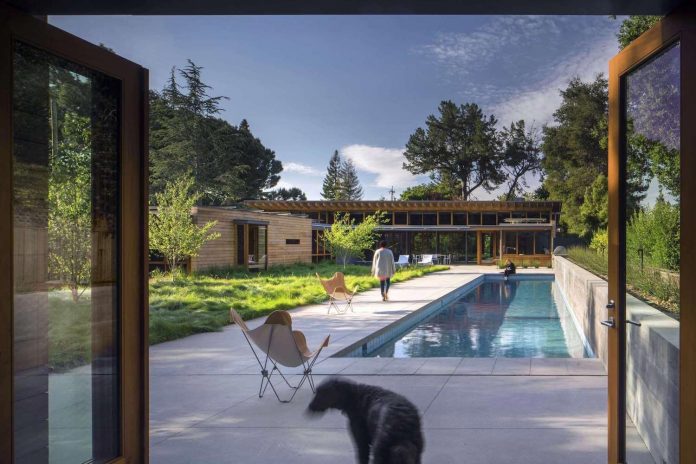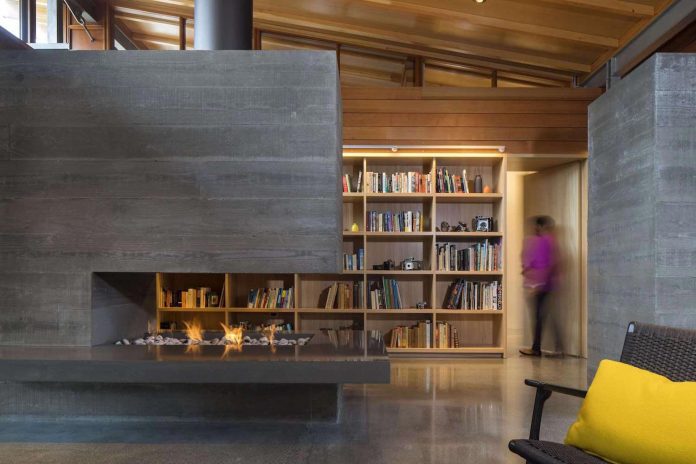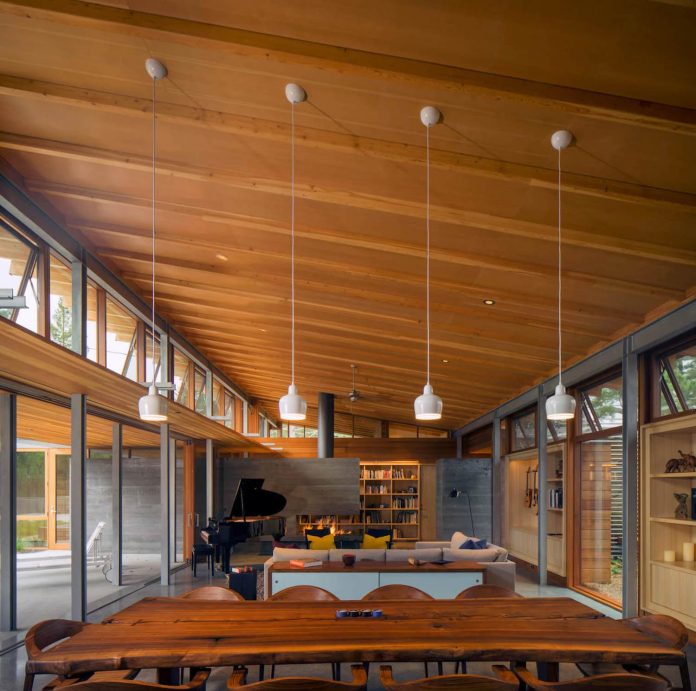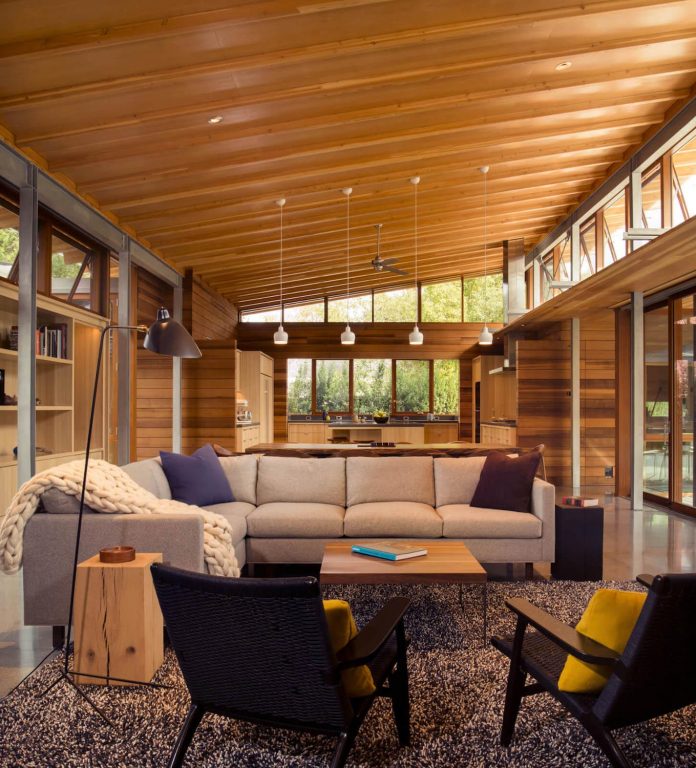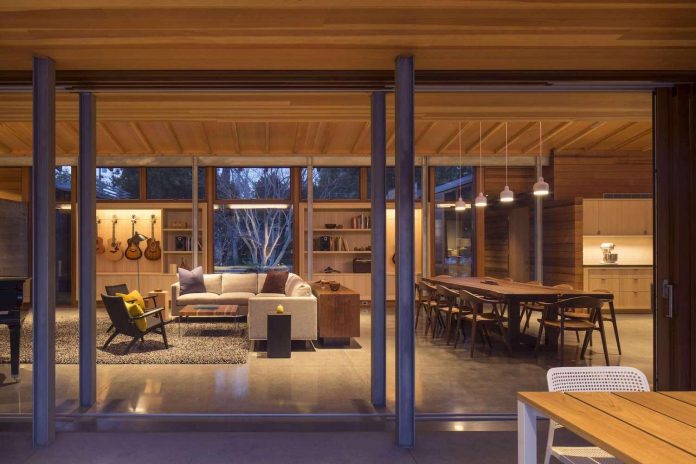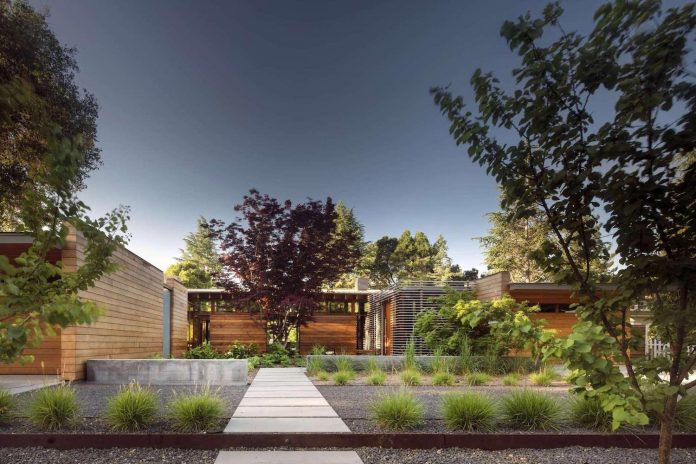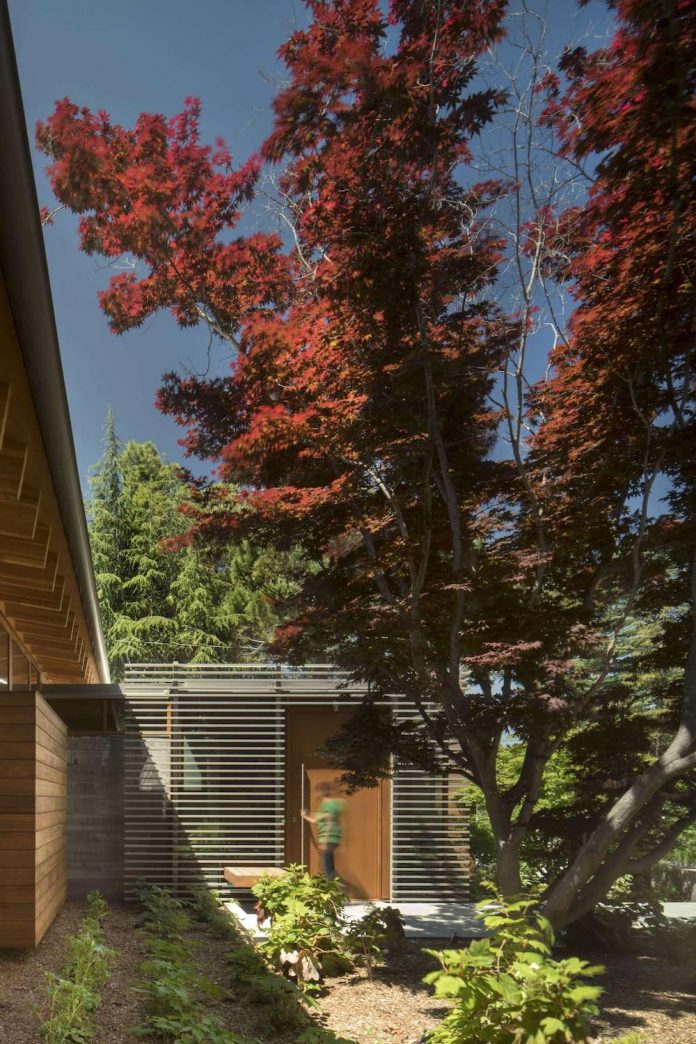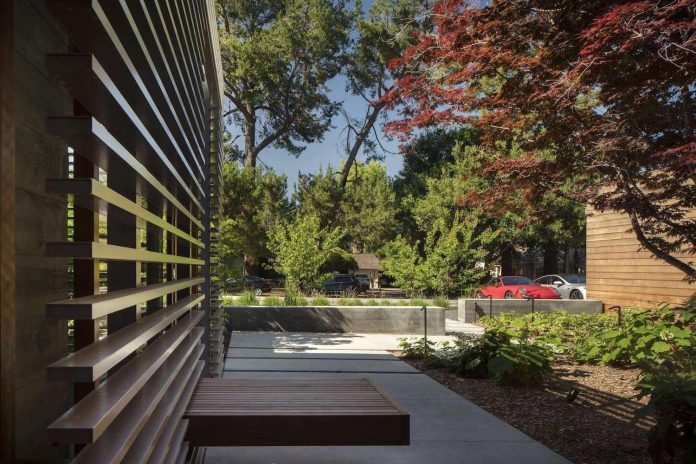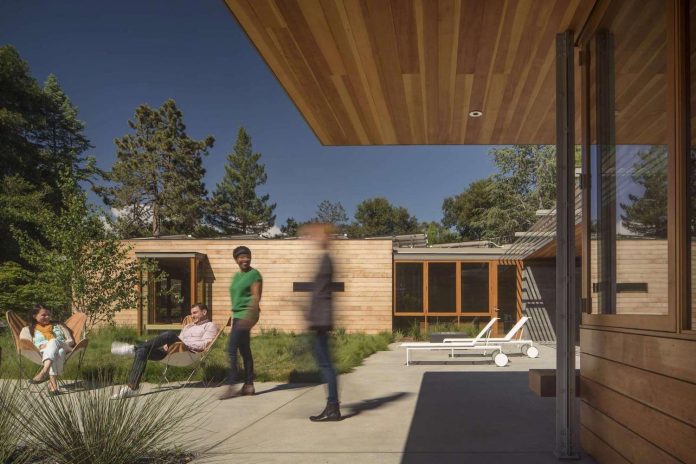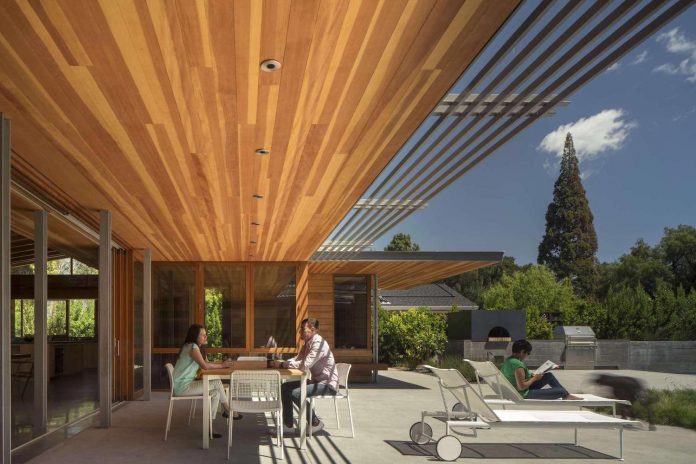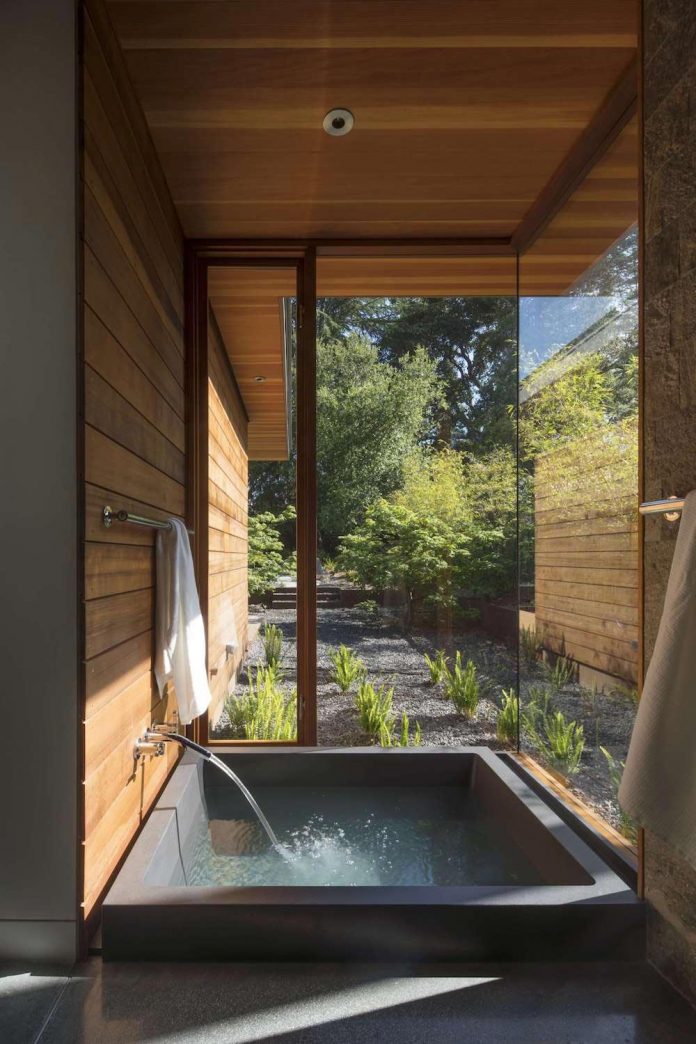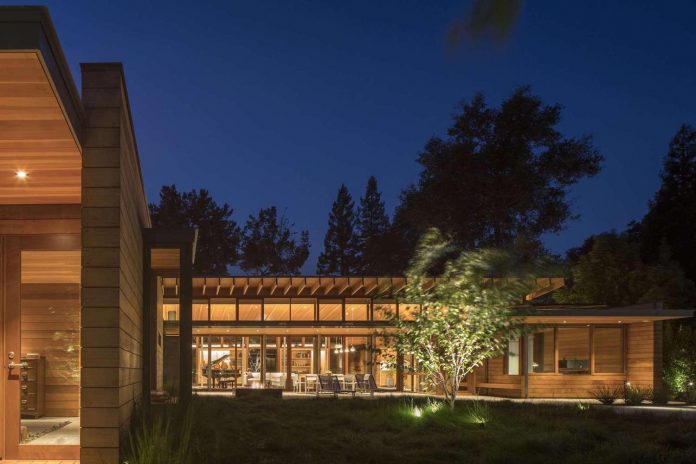Modernist reinterpretation of the Northern California ranch style home by Bohlin Cywinski Jackson
Architects: Bohlin Cywinski Jackson
Location: Los Altos, California, United States
Year: 2015
Area: 5.360 ft²/ 500 m²
Photo courtesy: Nic Lehoux
Description:
“Located in an established Los Altos neighborhood, this single-family residence is a modernist reinterpretation of the Northern California ranch style home the clients desired. Nestled amongst neighboring houses and a landscape of mature trees, the residence maintains a sense of privacy and offers this young family reprieve from the bustle of daily activities.
Designed around an existing Japanese maple tree—a vestige of the previous landscape and the relationship shared between residence and site—the house takes full advantage of the Silicon Valley’s mild climate. While windows and doors fill interiors with air and light, they also frame views of the diverse flora surrounding the home. In the living room, a wall of sliding glass doors blurs the line between indoors and out, opening to the back patio overlooking a meadow of tall grasses. In the master bedroom, one can hear the trickling of water and quiet rustling of trees coming from the meditation garden just outside. It is these moments, when the outdoors extend inside, that help anchor the building to site.
The main house is composed of a central double-height living and communal space that runs parallel to the street, shielding the home from the quiet thoroughfare. This common area, which includes a modest kitchen and place for family gathering, connects two single-story volumes, each containing a variety of private and functional spaces. With views from every room, one’s eye is easily drawn outside, where a linear pool and board-formed concrete garden wall, located along the eastern edge of the property, visually connects the main building to the guesthouse beyond.
The home is detailed with a natural, crisp palette, reflecting the client’s fondness for simplicity and tranquility. A variety of woods, including Douglas fir, western red cedar, and gray elm, are used throughout and provide a sense of warmth directly contrasted by exposed structural steel, polished concrete floors, and a textured concrete fireplace. A locally sourced Claro walnut table, measuring 10-feet in length, creates a comfortable dining space, its live edge balancing the clean lines of the living room. Additional furnishings reinforce the client’s desire for a minimalist environment.
The simple layout and detailing of this single-story residence, with its numerous connections to the surrounding landscape, create a home that is both calm and restful for the family to enjoy for many years to come.
Sustainability
The owners, who strive to be environmentally conscious, see their location as an opportunity to rely on the mild climate to passively cool their house. Operable windows and clerestories located throughout the allow them to take advantage of the cross breezes for natural ventilation while framing moments to the outdoor landscape.
The following sustainable measures were taken in the design of this house:
– Passive Cooling: The main central living space is oriented lengthwise along the east-west axis with operable windows and doors along the north and south facades. This creates a path for the prevailing winds to pass through the space, effectively cooling it. The living space is also double-height, which creates a chimney effect allowing warm air to rise and escape through the clerestory windows. This passive cooling strategy eliminates any need for a forced-air cooling system in the house.
– Renewable Energy: Photovoltaic and domestic hot water panels are strategically placed upon the roof and pitched south to optimize sun absorption. Energy collected from the PV panels offsets the net energy consumption of the house.
– Thermal Mass: Concrete radiant floors provide warmth during the winter and colder seasons of the year.
– Energy Conservation: The building envelope is well insulated using a combination of sprayed applied polyurethane insulation in the ceiling, and fiberglass blow-in insulation in the walls. The dense insulation in these cavities helps maintain heat in the winter. During the summer, the high albedo surface of the single-ply TPO cool roof helps reflect heat. Large overhangs on the south facade of the living space also shade glass windows in the summer, while allowing low sunlight during the winter.
– Indoor Air Quality: Low to no VOC products and materials were chosen for finishes such as paints, wood stains, and sealants. Composite wood products used in the building also met the requirements for low formaldehyde.
– Water Reduction Strategies: Low-flow plumbing fixtures are used in the kitchen and bathrooms. The landscape design also utilizes zoned drip irrigation with rain and moisture sensors. Plantings, including the meadow grass, are native to California and require little maintenance and watering.”
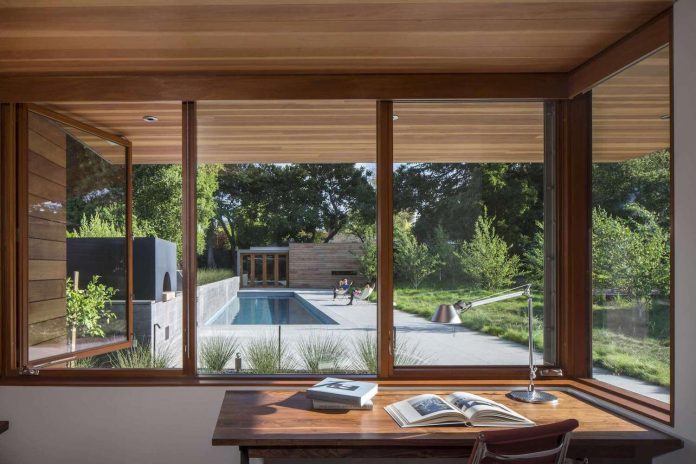
Thank you for reading this article!



